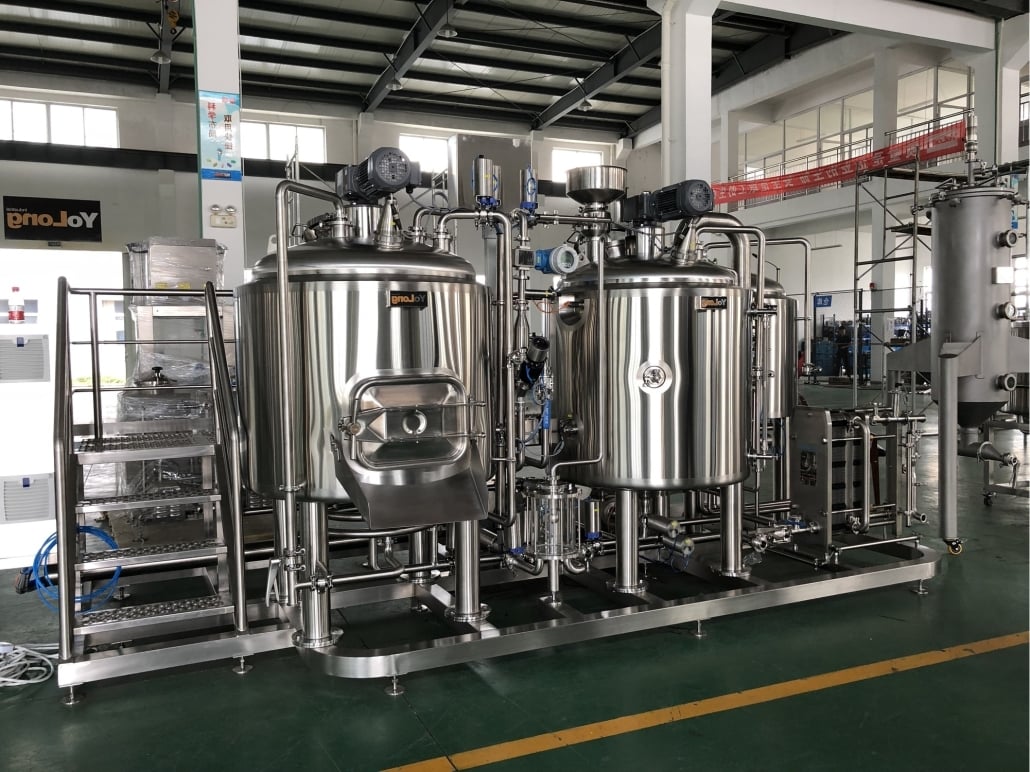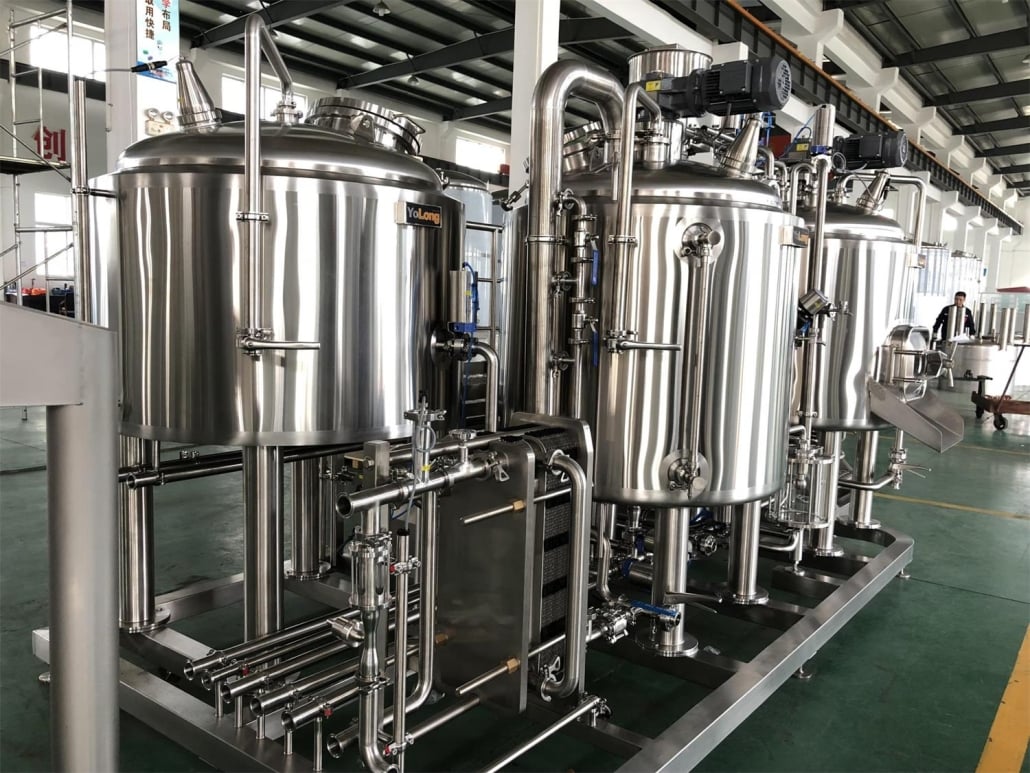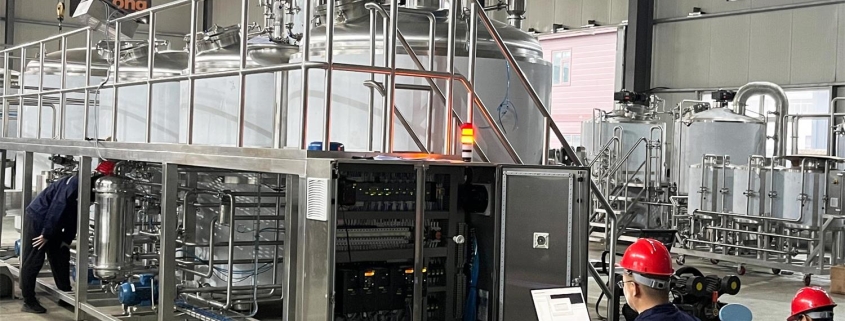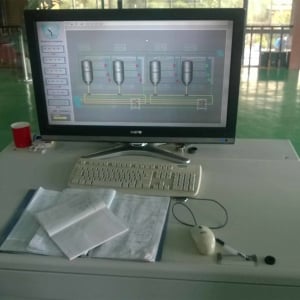Automated Brewing Systems
Imagine this: you walk into your kitchen after a long day, yearning for a refreshing, crisp beer. But instead of reaching for a store-bought six-pack, you tap a few buttons on your phone, and within hours, your very own perfectly brewed beer is ready to tap.
This isn’t a scene from a futuristic sitcom; it’s the reality offered by automated brewing systems. These countertop marvels are revolutionizing the homebrewing experience, allowing beer enthusiasts of all skill levels to craft delicious, high-quality beer with minimal effort.
What is an Automated Brewing System?
An automated brewing system is an all-in-one appliance that simplifies and streamlines the beer brewing process. These systems typically combine the functionality of several traditional brewing vessels into a single unit, often made from durable and easy-to-clean stainless steel.
Features of Automated Brewing Systems
- Automated Controls: The core of an automated brewing system is its digital control panel. This user-friendly interface allows you to program and monitor the entire brewing process, including steeping grains (mashing), boiling the wort, and controlling fermentation temperatures. Some systems even offer smartphone connectivity, enabling you to control and monitor your brew remotely.
- Integrated Heating Elements: Automated brewing systems eliminate the need for separate kettles and heat sources. They feature built-in heating elements that efficiently raise the water to the precise temperatures required for each brewing stage.
- Pumps and Filtration: Many systems incorporate pumps that automatically circulate the wort during mashing and transfer it between stages. Additionally, some systems include built-in filters to separate the wort from the spent grain after mashing.
- Cleaning Systems: Automated cleaning cycles are a welcome feature on many systems, simplifying the often-dreaded post-brewing cleaning process.

Benefits of Using an Automated Brewing System
- Convenience and Consistency: Automated brewing systems take the guesswork out of homebrewing. With precise temperature control and pre-programmed settings, you can achieve consistent, high-quality results batch after batch, without needing to be a seasoned homebrewer.
- Time-Saving: These systems significantly reduce the time commitment required for brewing. By automating many of the manual tasks, you can set your system going and come back to a finished batch hours later, freeing you up for other activities.
- Reduced Risk of Error: Since automated systems control critical aspects of the brewing process like temperature and timing, they minimize the chance of errors that can lead to spoiled batches.
- Increased Efficiency: Automated systems often optimize water usage and grain utilization, leading to more efficient brewing and less wasted ingredients.
- Compact Footprint: Many automated brewing systems are surprisingly compact, making them ideal for homebrewers with limited space.
Types of Automated Brewing Systems
There are two main types of automated brewing systems available for homebrewers:
| Type | Description | Pros | Cons |
|---|---|---|---|
| Extract Brewing Systems | These systems are designed for use with pre-made malt extract, simplifying the brewing process even further. | Ideal for beginners, very easy to use, fast brewing times | Limited control over the brewing process, less customization compared to all-grain systems |
| All-Grain Brewing Systems | These systems allow you to brew beer from scratch using whole grains, offering maximum control and customization over the final product. | Greater control over the brewing process, wider variety of beer styles possible | Steeper learning curve compared to extract systems, longer brewing times |
Choosing the Right Automated Brewing System
Several factors should be considered when selecting an automated brewing system:
- Budget: Automated brewing systems range in price from a few hundred dollars to several thousand dollars. Consider how much you’re willing to invest and choose a system that offers the features you desire within your budget.
- Experience Level: If you’re a homebrewing newbie, an extract brewing system might be a good starting point due to its ease of use. As you gain experience, you can graduate to a more complex all-grain system.
- Batch Size: Consider how much beer you typically brew per batch. Automated systems have varying capacities, so choose one that can accommodate your brewing needs.
- Features: Decide which features are most important to you. Do you need smartphone connectivity? An integrated cleaning system? Prioritize the features that will enhance your brewing experience.
Suppliers of Automated Brewing Systems
| Manufacturer | Popular Models | Price Range |
|---|---|---|
| Grainfather | G30, G40 | $998.98 – $1,499.00 |
| Brewzilla | Robobrew V3 All Grain Brewing System with Pump | $649.99 – $652.50 |
| PicoBrew | PicoBrew C | $799.00 |
| Brewer’s Edge | Mash & Boil | $399.00 |
| Spike Brewing | Polyphemous | $1,499.00 |
Automated Brewing System Capacity, Space Requirements, Design, and Layout
When shopping for an automated brewing system, consider the following factors:
- Capacity: Automated brewing systems come in a variety of sizes, with typical capacities ranging from 1 gallon to up to 10 gallons or more. Think about how much beer you plan to brew per batch and choose a system that meets your needs.
- Space Requirements: These systems can have a footprint that ranges from a countertop appliance to a larger unit requiring dedicated space. Carefully measure your available brewing area to ensure the chosen system will fit comfortably.
- Design and Layout: Automated brewing systems come in various shapes and configurations. Some are single vessel systems, while others feature separate kettles for mashing and boiling. Consider the aesthetics that appeal to you and choose a system that complements your brewing space.
Installation, Operation, and Maintenance of Automated Brewing Systems
Most automated brewing systems are relatively easy to install. Typically, they require minimal plumbing modifications and can be plugged into a standard household outlet. The instruction manuals provided by manufacturers offer detailed instructions for setup and operation.
- Operation: Operating an automated brewing system involves selecting a recipe on the control panel and following the on-screen prompts. The system will automate the various stages of the brewing process, including heating water, mashing grains, boiling wort, and controlling fermentation temperatures.
- Maintenance: Cleaning is an essential part of maintaining your automated brewing system. Many systems have built-in cleaning cycles that simplify the process. Regular cleaning ensures optimal performance and prevents contamination of future brews.
Choosing a Supplier for Your Automated Brewing System
Here are some key factors to consider when choosing a supplier for your automated brewing system:
- Reputation: Research the reputation of the manufacturers you’re considering. Read online reviews from customers to get a sense of their experiences with the products and customer service.
- Warranty: Compare the warranty policies offered by different suppliers. A longer warranty period indicates the manufacturer’s confidence in the quality and durability of their systems.
- Customer Service: Consider the availability and quality of customer service offered by the supplier. Responsive and knowledgeable customer support can be invaluable if you encounter any issues with your system.
- Return Policy: Inquire about the return policy offered by the supplier. A generous return policy allows you to try out the system with peace of mind in case it doesn’t meet your expectations.
Pros and Cons of Automated Brewing Systems
Pros
- Convenience and Consistency: Automated brewing systems significantly simplify the homebrewing process, making it accessible to both beginners and experienced brewers.
- Time-Saving: These systems automate many of the time-consuming tasks involved in brewing, freeing you up to spend less time managing the process and more time enjoying the finished product.
- Reduced Risk of Error: By precisely controlling critical factors like temperature and timing, automated systems minimize the chance of errors that can lead to spoiled batches.
- Increased Efficiency: Many systems optimize water and grain usage, resulting in less waste and more efficient brewing.
- Compact Footprint: Many systems are surprisingly compact, making them ideal for homebrewers with limited space.
Cons
- Higher Cost: Automated brewing systems can be a significant investment compared to basic homebrewing equipment.
- Less Hands-on Experience: For some brewers, the appeal of homebrewing lies in the hands-on experience and the satisfaction of crafting a beer from scratch. Automated systems can feel less interactive compared to traditional brewing methods.
- Limited Customization: While some automated systems offer some degree of customization, they typically don’t provide the same level of control as all-grain brewing with individual kettles.
- Potential for Malfunction: As with any appliance, there’s always a chance of mechanical or electrical malfunctions. A malfunction during the brewing process could ruin a batch of beer.

FAQs
Q: Are automated brewing systems easy to use?
A: Yes, automated brewing systems are generally user-friendly. They come with intuitive control panels and pre-programmed settings that guide you through the brewing process. Many even offer smartphone connectivity for remote monitoring and control.
Q: How much time does it take to brew a batch of beer with an automated system?
A: The brewing time can vary depending on the system and the specific beer style being brewed. However, automated systems generally reduce brewing time compared to traditional methods by automating many of the time-consuming steps. For instance, some systems can complete a basic batch of beer in as little as 4-6 hours.
Q: How much does it cost to brew a batch of beer with an automated system?
A: The cost per batch will depend on the ingredients you use and the efficiency of your system. Generally, automated brewing can be cost-effective, especially when you factor in the convenience and consistency it offers.
Q: Can I use my own recipes with an automated brewing system?
A: This depends on the capabilities of your chosen system. Some systems come with pre-loaded recipes, while others allow you to create and customize your own. All-grain systems typically offer more flexibility for recipe creation compared to extract brewing systems.
Q: How do I clean and maintain my automated brewing system?
A: Most automated brewing systems have built-in cleaning cycles that simplify the process. Regular cleaning is essential to maintain optimal performance and prevent contamination of future brews. Consult your system’s instruction manual for specific cleaning instructions.
Conclusion
Automated brewing systems represent a revolutionary development in the world of homebrewing. These sophisticated appliances allow beer enthusiasts of all experience levels to brew delicious, high-quality beer with convenience, consistency, and minimal mess. Whether you’re a seasoned homebrewer looking to streamline your process or a curious newcomer intrigued by the art of craft beer, an automated brewing system could be the perfect gateway to brewing your own favorite beverages from the comfort of your home. So, research different systems, consider the factors outlined in this guide, and embark on your craft beer brewing adventure!













